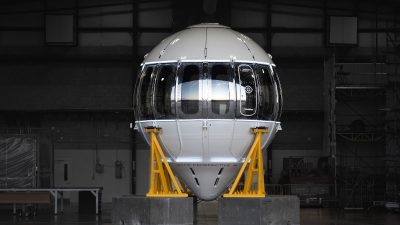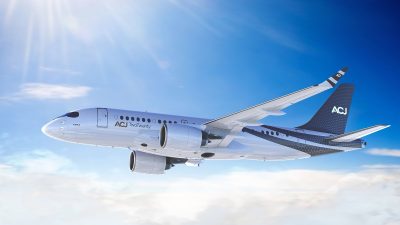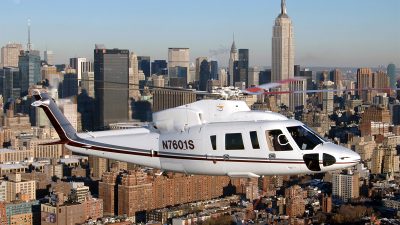The first century of aircraft design was not particularly exciting to trend watchers, as most production aircraft were little more than tubes attached to wings. Later, radical boomerang-shaped aircraft known as “flying wings” such as the Northrop YB-49 and Northrop Grumman B-2 Spirit, with their stealthy, futuristic appearance and blended wing body (BWB) military aircraft Captured the imagination of the aviation industry. Captured the imagination of the aviation industry with its sophisticated, futuristic appearance. Configurations such as the B-1 Lancer and the Lockheed SR-71 Blackbird have also gained a cult following among fans of breaking design and acoustic barriers.
The return of BWB concepts, which now solve past control and stability problems, promises more efficient performance for defense, maritime and even commercial passenger aircraft, some of which are specifically designed for business jets. Are designed. The streamlined shape of the BWB reduces drag, thereby improving fuel efficiency and reducing carbon dioxide emissions – the latter a key factor for aircraft manufacturers meeting an industry-wide pledge to become carbon neutral by 2050. Trying to do.
The EcoJet, Bombardier’s BWB concept, completed its first demonstration flight testing in 2017 and is now beginning its second generation with a larger prototype. Stephen McCullough, senior vice president of engineering and product development at Bombardier, said, “Our core idea was to create a green aircraft without compromising our customers’ expectations from a business jet.” This included achieving speed, altitude and interior volume standards. which provide at least similar capabilities to the existing fleet. The blended wing body meets most of these requirements, he says, and could potentially reduce emissions by 20 percent. One of the challenges of this format is maintaining an airport-friendly aircraft footprint, although McCullough emphasizes the positives, noting that the aircraft’s longer, more spacious cabin offers “a lot of interesting possibilities” for Bombardier’s interior designers. “Opens”.
Airbus also spent several years developing a twin-engine BWB model, called the Maverick, but the real breakthrough came when the manufacturer added the aircraft to its hydrogen-powered ZEROe concept program because of its higher internal strength than the standard design. Carries better hydrogen in comparison. , , However, an Airbus spokesperson said the Maverick is still “not for the first generation of hydrogen aircraft, but for the next generation.”
In contrast, California-based JetZero is accelerating its demonstration process to be flight tested in 2027 and ready for market in 2030. Technologies for eVTOL. , and the entrepreneur in him was inspired by NASA’s $1 billion investment in BWB research.
He says: “This design caught my attention because it solves the biggest challenges facing aviation: reducing costs and fuel consumption, reducing emissions, improving the passenger experience and increasing operational efficiency. .” The aircraft is being funded by a $235 million Air Force grant and will be initially commissioned before entering the public sector. O’Leary says the timeline set for JetZero’s efforts is realistic. He says, ”We have been working on this airframe technology for more than 30 years and can use commercially available products for the rest of the aircraft, including engines, avionics and operating systems.’ ‘
The BWB’s increased usable size makes it particularly suitable for transport applications, as demonstrated by California-based air cargo specialist Nautilus. According to company co-founder Alexey Matyushev, Nautilus has orders worth $8.6 billion for a new fleet of autonomous cargo planes from AmeriFlight, Volatus Aerospace, Flexport, Astral Aviation and other customers, the first of which is about to make a maiden flight. Expected to pass the test. few years. Two years.
There seems to be hope that many of the challenges in developing environmentally friendly BWB aircraft can be overcome through heavy incentives in engineering development and investment. McCullough noted that more than a third of the dollars Bombardier spent on research and development last year went to sustainability projects like the EcoJet, and that percentage is expected to increase to 50 percent by next year. “The commitment to 2050 drives our innovation efforts, as well as the rest of the industry, toward achieving this goal.”












